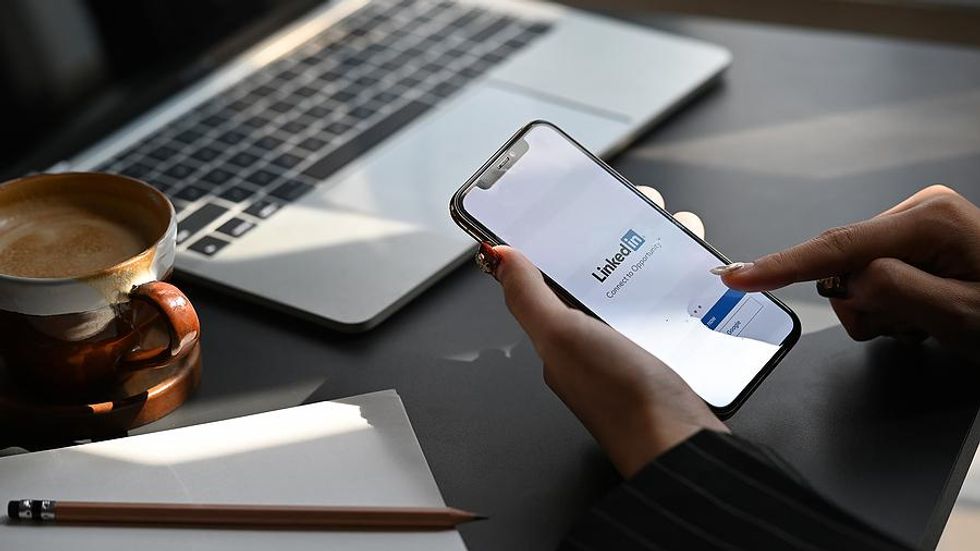
Are you concerned about age discrimination? While most job seekers fear discrimination by hiring managers, the truth is that you’re more likely to be discriminated against by a computer.
Most 50-something or older job seekers don’t realize that the technology they leverage to apply for jobs may be screening them out of consideration. Sadly, this is one of the most common reasons that job seekers don’t get the interviews they want and deserve.
Here’s the key thing you need to know. The databases, or applicant tracking systems (ATS), that employers, recruiters, and job boards use to parse, store, and analyze incoming resumes are capable of estimating how much experience you possess. When recruiters or hiring executives search these databases for candidates with a certain amount of experience—let’s say 12-15 years—the ATS will screen out candidates who possess anything other than 12, 13, 14, or 15 years. As a result, your resume or LinkedIn profile will not be listed in the resulting candidate search. This eliminates your candidacy before a human even sees your resume or LinkedIn profile.
Please note that while job boards, companies, and recruiters do not intend to discriminate, the technology they are using to organize the flood of resumes they receive is doing so inadvertently. This means that every time your resume is entered into a job board system, company website, or recruiter website, the experience filtering described above may occur. It also means that your LinkedIn profile could be subjected to this same filtering process any time a company or recruiter searches for candidates like you with a specific amount of experience in mind.
If you’re currently in or plan to launch a part-time or full-time search for a new role, take time to age-proof your resume and LinkedIn profile. Three simple changes will boost your candidacy, help you attract more opportunities, and win you more job interviews.
How Do You Age-Proof Your Resume And LinkedIn Profile?
To age-proof your resume and LinkedIn profile, you should update your LinkedIn profile picture, eliminate dates from your education listings, and remove pre-2000 employment dates from your work history.
Do You Need To Put Your Age On Your Resume?
No, you should not put your age or any information that might reveal your age to an employer on your resume. Doing so might make you more likely to experience age discrimination in the hiring process, limiting your job opportunities.
1. Revamp Your LinkedIn Profile Picture
While we strongly recommend a professional headshot for your LinkedIn profile picture (you can get one in most markets for $100-$200), an amateur photographer might work if you know one who takes good portrait shots. The key is an attractive pose that makes the most of your facial characteristics and personality while minimizing any age-related deficits.
If you have silver hair, for example, consider using a dark background or black and white photo to reduce the risk of a washed-out appearance. Select a pose that conveys energy and vitality and hints at the wisdom youth simply can’t replicate. Use a full-face smile to project energy with the photo and make sure you dress in interview-ready attire. You want to seem professional yet approachable.
2. Eliminate Dates From Your Education Listings On Your Resume And LinkedIn Profile
 Bigstock
BigstockIt’s standard these days for most folks over 30 to omit education dates from their resume and LinkedIn profile. This is easy enough to do on your resume where you can also omit dates of training, certifications, licensure, or affiliations.
In short, omit any date prior to 2000, since most recruiters only want to see the last 10-15 years of your experience on your resume or LinkedIn profile. To achieve this on LinkedIn, go to your profile and then edit your "Education" section. Remove the month and year in the drop-down box for your start and finish dates. Eliminate dates from other sections as well.
3. Remove Pre-2000 Dates From Your Work History Sections On Your Resume And LinkedIn Profile
 Bigstock
BigstockThis is a little more complex but well worth doing. On your resume, list your post-2000 work experience in your "Work History" section and separate your pre-2000 experience into an "Additional Experience" section. For your pre-2000 jobs, omit your dates of employment and list the amounts instead. For example, if you worked at GE from 1992-2000, report that as “8 years.”
LinkedIn doesn’t allow members to omit dates from employment so your only choice is to eliminate pre-2000 jobs altogether. Try embedding a short version of older jobs in your first post-2000 listing or briefly noting relevant older roles in your LinkedIn summary. Either tactic will help you win more LinkedIn profile views.
While we never recommend using online job boards for an effective job search at any age (there are more efficient ways to create and pursue career opportunities for yourself), the truth is that these systems inadvertently “discriminate” against candidates with more than 15 years of work experience. Unfortunately, this same potential exists on LinkedIn and company/recruiter websites anytime a hiring manager or recruiter conducts a candidate search based on the amount of experience job seekers possess.
The good news is that a few simple tricks can protect your resume and LinkedIn profile from age discrimination and give you greater access to the career opportunities you want and deserve. By following the tips above, you'll successfully age-proof your resume and LinkedIn profile—and stand out as a qualified and relevant candidate.
Need more help with your job search?
Become a member to learn how to land a job and UNLEASH your true potential to get what you want from work!
- How To Overcome Age Discrimination In Your Job Search - Work It ... ›
- Over 50? This Resume Mistake Will Make You Look Old - Work It Daily ›
- 10 Things To Immediately Do On LinkedIn - Work It Daily ›
- 3 Best Resume Tips For Older Workers - Work It Daily ›
- How To Personalize Your LinkedIn URL - Work It Daily ›
- Going Back To Work At 50: Where Should You Start? - Work It Daily ›
- 3 Things Your LinkedIn Profile Must Have In 2025 - Work It Daily ›
- 3 Easy Ways To Spring-Clean Your Resume - Work It Daily ›

 Bigstock
Bigstock Bigstock
Bigstock Bigstock
Bigstock


